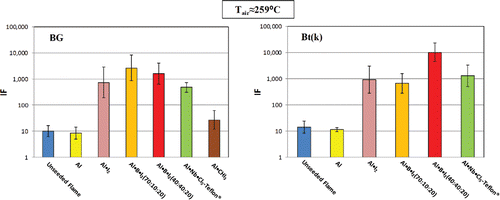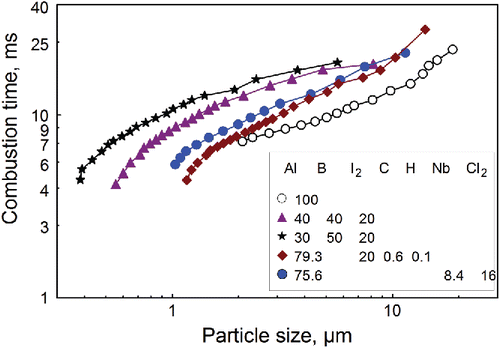Figures & data
Figure 1. Experimental setup for testing biocidal effect of combustion products of different materials on the aerosolized spores.
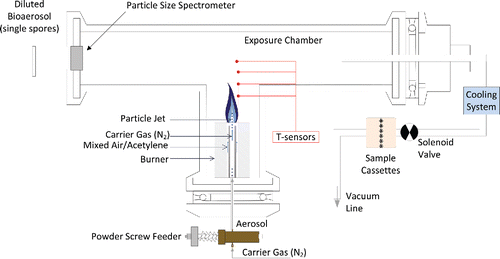
Figure 2. TG traces of Al-based composites at 10 K/min, prepared using room and cryogenic temperature milling. Numbers in parentheses under “Al·B·I2” indicate weight percentages for Al, B, and I2, respectively. Al·B·I2 powders were not aged for these measurements. The vertical axis applies to the top curve. All other curves are stacked vertically downward to help visually distinguish them. Each curve represents one measurement.
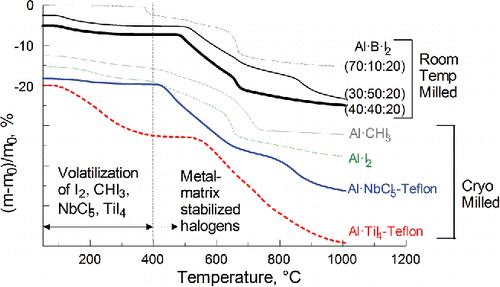
Figure 3. Stability of Al-based composites containing halogen. Each bar represents a single TG measurement. Different colors used in some bars depict changes in stability caused by Teflon™ coating and initial aging in argon.
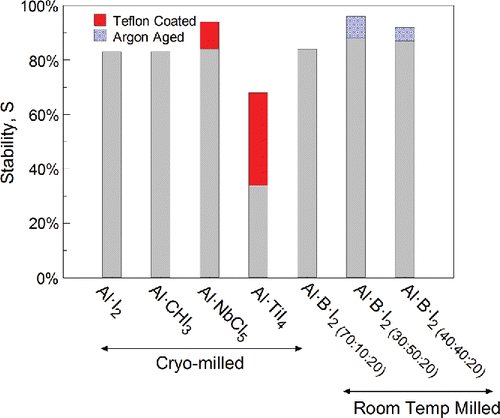
Figure 4. Ignition temperatures of Al-based composites obtained in the heated filament experiments. The ignition temperature were reported in the following references: pure Al, Al·I2 (Zhang et al. Citation2012), Al·B·I2(70:10:20) (Aly et al. Citation2014), Al·B·I2(40:40:20) (Wang et al. Citation2016a), Al·B·I2(30:50:20) (Wang et al. Citation2016a), and Al·CHI3 (Abraham et al. Citation2014). New data on Al·NbCl5 are also presented. Each point shows an average value and the bars show a standard deviation for 3-5 individual measurements.
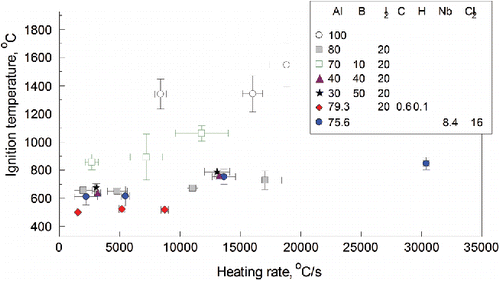
Figure 5. Particle size distributions for composite materials used in the combustion experiments. Each distribution represents a single measurement.
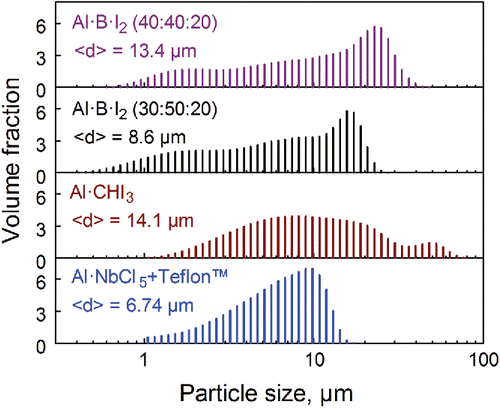
Figure 7. Inactivation of aerosolized BG and Bt(k) spores by combustion products of different materials at low position of the burner (Tair ≈ 170°C). Each bar represents the geometric mean value with the error bars representing the geometric standard deviation calculated from 18 to 53 measurements (depending on the material tested). Estimated exposure time = 0.33 s; powder delivery concentration = 35 to 42 mg per L of air (depending on the powder).
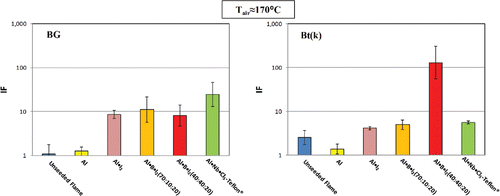
Figure 8. Inactivation of aerosolized BG and Bt(k) spores by combustion products of different materials at high position of the burner (Tair ≈ 259°C). Each bar represents the geometric mean value with the error bars representing the geometric standard deviation calculated from 21 to 44 measurements (depending on the material tested). Estimated exposure time = 0.33 s; powder delivery concentration = 35–42 mg per L of air (depending on the powder).
